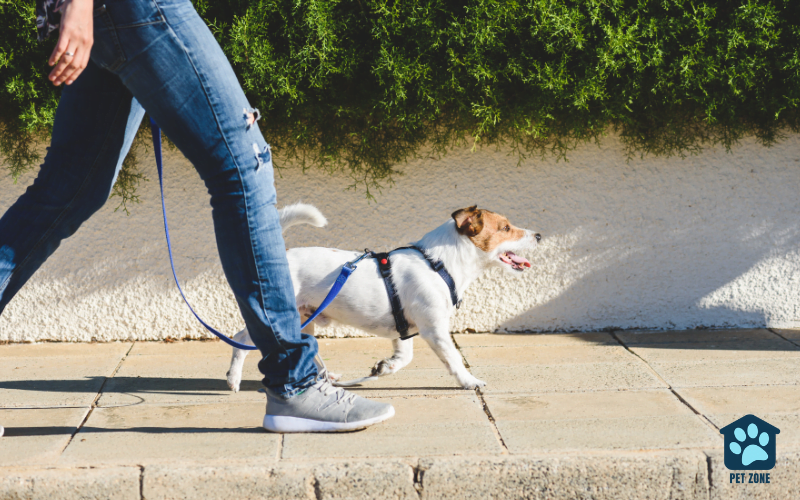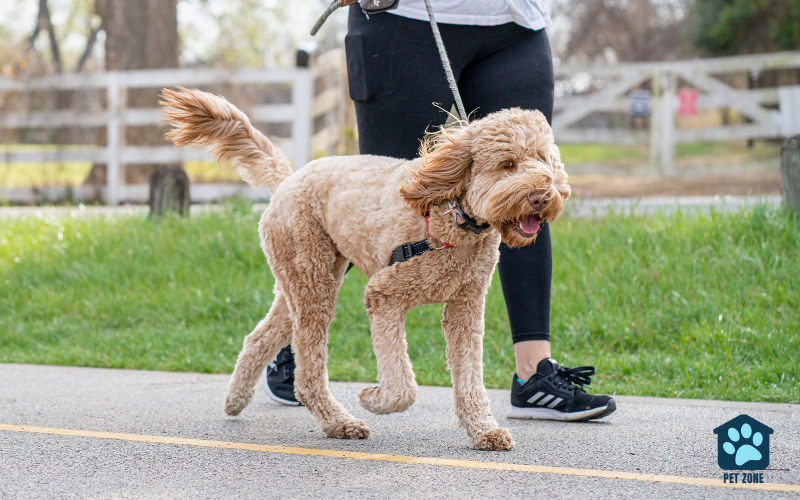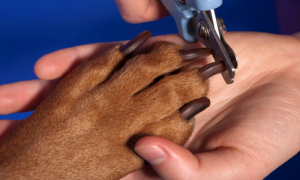Estimated reading time: 7 minutes
Walking your dog is an essential part of pet ownership, providing necessary exercise, bonding time, and mental stimulation. But there’s a small detail that can make a big difference in the quality of your walks: What side should your dog walk on?
Choosing a specific side for your dog to walk on can improve both your experiences. This article aims to explore this important topic, discussing why it matters, the history behind the choice of sides, and offering tips on how to train your dog effectively.
The Importance of Consistency in Training
Training a dog involves more than just teaching commands. A crucial part of effective training is consistency. Dogs, like humans, learn by repetition and consistency. Establishing a routine helps them understand what is expected of them, enhancing their sense of security and comfort.
Choosing a specific side for your dog to walk on is an extension of this consistency. It creates a clear expectation for your dog every time you go out for a walk. It tells them where they should be in relation to you, allowing them to focus on walking well rather than being distracted by uncertainty.
This consistency does not only benefit the dog but also makes walks more enjoyable for you. When your dog knows where to walk, there is less pulling on the leash, less zigzagging across your path, and ultimately less stress.
When it comes to walking your dog, it doesn’t really matter which side you choose. What truly matters is the consistency of your choice. Consistency provides your dog with a clear structure and makes your daily walks smoother and more enjoyable.
Traditional Dog Walking – Why the Left Side?
The convention of dogs walking on the left side of their human companions has historical roots. In earlier times, dogs were primarily used for work, such as herding livestock or hunting.
The humans handling these dogs were often right-handed, thus holding tools, weapons, or the reins of a horse in their right hand, leaving the left side free for handling the dog. This gave rise to the tradition of dogs being trained to walk on the left.
Moreover, in military and police dog training, the left side is often chosen for practical reasons. This leaves the handler’s right, often dominant, hand free for other tasks.
Walking on your left side teaches your dog that you are the dominant, the leader of the pack, helping to maintain order and harmony during your walks.
But what does this mean for the average pet owner? Walking your dog on the left side can give your walks a structure, and having your dog on your left can feel more comfortable if you’re right-handed.
However, it also means your dog is closer to the road if you walk on sidewalks, which could potentially be dangerous if your dog is reactive or easily startled.
Choosing the Right Side – A Contemporary Approach
While tradition has dictated that dogs walk on the left, some modern trainers and dog owners have begun opting for the right side. But why the shift?
In essence, it boils down to safety and convenience. For those who walk their dogs in urban environments, having the dog on the right keeps them farther from the road and the potential hazards it poses, such as passing cars or bikes. This is especially important if your dog is easily spooked or reactive.
Furthermore, if you’re left-handed, having your dog walk on the right might feel more natural and comfortable. It leaves your dominant left hand free for handling leashes, treats pouches, or other necessary items during your walk.
However, choosing the right side could have drawbacks, too. It goes against normal dog walking etiquette, which might cause confusion if you’re walking in a busy area with other dogs.
Also, if your dog participates in certain activities or competitions, like obedience trials, where the left-side rule is standard, walking on the right might interfere with their performance.

Factors to Consider When Choosing a Side
While we’ve covered the traditional and contemporary views on which side your dog should walk, ultimately, the choice may come down to a few key factors:
Dog’s Individual Comfort and Preference
Just as humans have a dominant hand, dogs may show a preference for one side over the other. Paying attention to your dog’s natural inclinations can guide your decision.
Safety and Visibility
Consider the environment where you usually walk. If you often walk in urban or busy areas, having your dog on the side away from the road or bike path might be safer.
Handler’s Dominant Hand and Ease of Handling
If you’re right-handed, you might find it more comfortable and natural to handle the leash with your right hand and have your dog on your left, and vice versa.
Specific Needs for Service Dogs
For service dogs, the side they’re trained to walk on often depends on the specific tasks they’re required to perform. If your dog is a service animal, consult with a professional trainer or the organization you’re working with to determine the best side for your dog.
In the end, there’s no one-size-fits-all answer. You need to evaluate your own and your dog’s preferences and comfort, the environments where you walk, and any specific needs or tasks your dog has.
Tips and Techniques for Training Your Dog to Walk on a Chosen Side
Once you’ve decided which side your dog should walk on, it’s time to train them. Here are some tips to get you started:
Basic Steps to Start Training
Begin by putting your puppy on a leash. Choosing the right leash for your dog is vital; a good leash provides control during training, is comfortable for both you and your pet, and suits your dog’s size, breed, and walking behavior.
Start walking, encouraging your dog to stay on the chosen side with verbal cues like “left” or “right.” Use gentle, consistent leash pressure to guide your dog to the correct side. If they veer to the opposite side, gently guide them back.
Using the “Heel” Command
The “heel” command is particularly useful for maintaining your dog on the chosen side. It instructs your dog to stay close to you, aligning their head or shoulder with your leg.
This can greatly reduce pulling and help keep your dog in a consistent position during walks so that your dog doesn’t accidentally trip you. If your dog hasn’t learned “heel” yet, it’s a worthwhile command to introduce.
What to Do When the Dog Insists on Changing Sides
If your dog keeps switching sides during the walk, it could be a sign of confusion or lack of focus. Try to keep the leash short but not tight, guiding your dog back to the chosen side each time they cross over. Be patient and consistent.
Reward-Based Methods
Positive reinforcement is key in dog training. Whenever your dog is walking on the correct side, reward them with treats, praise, or petting. This will encourage them to continue walking on that side.
Remember, patience is key. Changing habits takes time, and your dog might not understand what you want immediately. Keep your training sessions short and positive, and gradually, you’ll see improvement.
Conclusion
Walking your dog should be a pleasant and bonding experience for both of you. By choosing a consistent side for your dog to walk on, you’re not only improving the quality of your walks but also adding another level to your communication with your pet. Whichever side you pick, the key lies in your consistency and patience.
We hope you found this article helpful and informative. Do you have a preferred side for your dog to walk on? Have you tried any specific techniques that worked wonders? We’d love to hear your stories and experiences. Please share them in the comments section below.
If you found this article useful, don’t forget to share it on your social media platforms so other dog owners can benefit from it too. Remember, every dog’s journey is unique, and your insights might just make someone else’s training experience that much easier!









I walk my dog on the left side. She kind of picked it and I’ve just went with it. Interesting there’s a history behind left side walking.
Happened upon your post on the WordPress feed and just wanted to send a friendly shout-out! Your content caught my attention, and I’m eager to explore more of your captivating posts. Although I couldn’t locate the follow button (LOL!), I’ll definitely bookmark your blog! Rest assured, I’ll be on the lookout for your future posts.